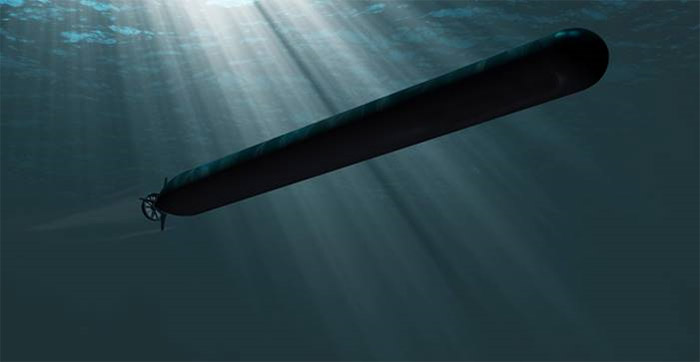Quite interesting is Navy Large Unmanned Surface and Undersea Vehicles: Background and Issues for Congress, Congressional Research Service (CRS) Report R45757, Updated December 20, 2023, written by Ronald O'Rourke, Specialist in Naval Affairs at https://sgp.fas.org/crs/weapons/R45757.pdf
Amongst other Unmanned Vehicle issues for Congress it contains
familiar descriptions of Boeing’s winning Orca XLUUV technology developed from Boeing's
Echo Voyager. A major mission envisaged for Orca appears on page 16 “to, among other
things, covertly deploy the [General Dynamics Hammerhead Smart Naval Mine] a planned mine that would be tethered to the seabed and armed with an
antisubmarine torpedo [eg. the US Mark 54 LWT], broadly similar to the Navy’s Cold
War-era CAPTOR (encapsulated torpedo) mine.”
In August 2022 I wrote about use of the Hammerhead in the context of defending Taiwan against China.
LIKELY LOCKHEED BLACK PROJECT(s)
CRS R45757 page 16 also makes the passing comment “(The other [Orca] bidder was a team led by Lockheed Martin.)”. So Lockheed Martin (LM) notionally lost the Orca competition. But I haven’t heard that LM lamented its loss.
---
As LM is the world’s largest and most connected arms company I suspect it is still in the XLUUV business and that its entry for Orca has been further developed into at least 3 variants:
1. As a highly stealthy intelligence gathering XLUUV particularly
against Russian and Chinese “peer” competitors. Promoting stealth may mean it is smaller and more torpedo like than Boeing's "subway car" sized and shaped Orca. LM's intel gathering version may a have anechoic coating and very quiet propulsion using single or combined propulsion technologies including (fuel cell AIP, RTG, tiny nuclear PWR and/or electric propulsion). It might be small enough to be launched from a multipurpose Virginia Payload Tube (VPT) and perhaps 4 can be launched from USS Jimmy Carter's Multi-Mission Platform.
I recall seeing (years ago on the web) a green-brown-black camouflaged version of the LM artwork above. But for some reason the camouflaged artwork appears to have been taken down.
and/or
2. Perhaps as a fast moving XLUUV carrying a high explosive or “special” warhead against
peer competitor targets. Perhaps as a Mutually Assured Destruction deterrent to
Russia’s NATO reporting name “KANYON” (aka. Poseidon or Status-6 Oceanic Multipurpose
System”. KANYON is believed to be a conventional or nuclear warhead armed nuclear-powered XLUUV.
and/or
3. As a UUV placed in front of a Russian KANYON in order to destroy that Russian weapon. A US/NATO network of numerous, distributed, AI sensors might expedite pre-positioning. This American UUV might be small enough to be air-dropped, rather than needing to chase a KANYON at 100 odd knots.






















